HDR vs. Flash/Ambient Photography
The photos you use to market your listings are the first thing most buyers will see when searching for homes. It’s important you use the best you can get! You’ve probably received marketing emails from photographers promising to shoot 20-40 listing photos for a low price. They may (or may not) explain that these photos are “HDR” photos. So what’s wrong with that? Aren’t photos photos? Not exactly.
What is HDR?
HDR stands for “high dynamic range”, which is simply a term used to reference the range of light or “luminosity” values in a scene being photographed. It’s also a technique used to capture that wide range of light in a single image. The technique uses a series of photos exposed at different shutter speeds, then combines them into a single image that shows more detail in the shadows and highlights. This technique is often used for landscape photography, but real estate interiors pose a unique challenge to photographers because of this concept of dynamic range. Bright light coming in the windows often overpowers room lighting, leaving the interior very dark. Photographers love HDR for real estate because it’s fast, which translates to more jobs and more money.
Let’s say your next listing has an amazing view of Lake Whatcom out of the windows. That’s a feature you’re going to want buyers to see! If you were shooting this view you’d adjust your camera settings to perfectly expose for the view, but do you see what happens to the interior when you do that? It vanishes.
The room you’re seeing this view from has an awesome seating area with a telescope, so you’re going to want to show that off too. Another adjustment to show that and we have:
No view. But how can you show both?
Before the modern age of digital cameras, especially the newer high-megapixel cameras, it wasn’t possible to capture the full dynamic range in this scene in one shot. The only way show it all in one photo was to “HDR it” -combine several images in photo-editing software. The photographer would take anywhere from 3-5 or more photos exposed for the different levels in the dynamic range, then the software would combine them all together. It looks like this:
Good, right? Well, its kind of just ok. The view is still too bright, and the colors in the room aren’t really the colors of the room exactly. And this is the main issue with HDR. It’s quick and relatively easy, but at it’s best it doesn’t do that room and the view justice.
Flambient to the rescue!
The term “flambient” is a mashup of “flash” and “ambient”, the two types of light used in this photography technique. It combines ambient light values (the available light in the room without added flash), but not the colors of light which can be inaccurate, with added flash lighting to both adequately light the room and preserve color accuracy.
One of the main advantages of flambient photography for real estate interiors is its accuracy of color and lighting. Combining of ambient and artificial lighting helps create a more balanced and realistic image. This gives the image more depth and allows more of the details of the interior to be highlighted. Additionally, the colors in the image will be more accurate because they won’t be affected by the lighting in the room. Also, using flash and some photoshop magic, that million dollar view is now visible in all it’s glory.
Flambient photography does take a little longer to shoot and edit than HDR, due to adjusting flash gear for each shot, and because of that it can be a bit more expensive. But not that much more- it’s a small part of your commission, and well worth it.
I still promise delivery of photos by the next day, and sometimes the same day as the shoot.
Note: need to refer back to HDR photographer’s ads? Mention that I can do HDR if that’s what the client wants? My goal is to educate the reader about the difference and give them the information to make a decision about what they want. Too long? Too technical?




